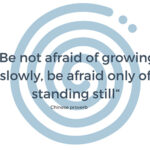| May 2024 |
Are you confident in navigating your Resignation process?

A guide on how to approach this often uncomfortable process.
WRITTEN BY: Michelle White
Leaving a job can be both exciting and nerve-wracking. Whether you’ve found a new opportunity or you’re ready for a change, resigning from your current position requires careful consideration and planning.
Here’s a step-by-step guide to help you navigate the resignation process smoothly and professionally.
Before You Resign
*Sleep on It
After securing a new role, take some time to settle your excitement and ensure your decision to leave is firm. Reflect on your reasons for accepting the new position and ensure there’s no second-guessing. Additionally, check your entitlements, such as annual leave and superannuation payments, to ensure a smooth transition.
*Secure Your Offer
Avoid resigning from your current job until you’ve secured, confirmed, and signed the offer for your new position. Ensure all necessary documentation and agreements are in place before proceeding.
Prepare to Resign
*Write Your Resignation Letter
Craft a formal resignation letter outlining your intent to resign, your last day of employment, and a brief expression of gratitude for the opportunity. Keep the letter concise, professional, and free from emotional language.
*Prepare for the Discussion
Choose the appropriate person to resign to, typically your direct manager. Schedule a face-to-face meeting to deliver your resignation letter. Prepare for the conversation by practising what you’ll say and anticipating potential responses.
“How you handle your resignation can impact future opportunities and professional relationships, so navigate the process thoughtfully and courteously.”
“…leave a positive impression on your former employer and colleagues.”
During Your Resignation Period
*Be Professional and Positive
Remain positive and accountable during your resignation period. Uphold your work ethic and responsibilities until your last day of employment. Avoid making negative comments about the company or individuals to colleagues.
*Assist with the Transition
Help facilitate a smooth transition by preparing a comprehensive handover and assisting with the training of your replacement. Avoid sharing confidential company information and refrain from copying or emailing sensitive documents.
Last Day and Contact After Leaving
*Bid Farewell Professionally
On your last day, consider sending a farewell email to your team expressing gratitude for their support and positive experiences. Leave without fanfare and only take belongings that belong to you.
*Maintain Professionalism Online
Avoid making derogatory comments about your company or departure on social media. Update your LinkedIn profile after commencing your new role and maintain professionalism in your interactions with former colleagues.
Resigning from a job is a significant milestone in your career journey. By approaching the process with professionalism, respect, and foresight, you can ensure a smooth transition and leave a positive impression on your former employer and colleagues.











